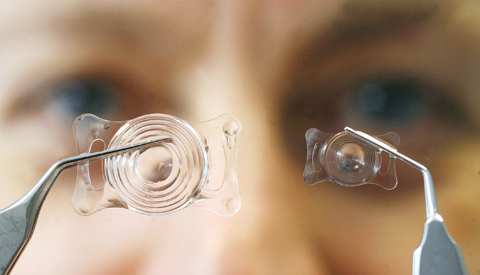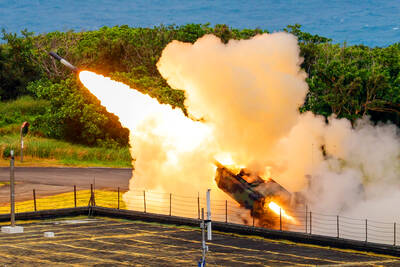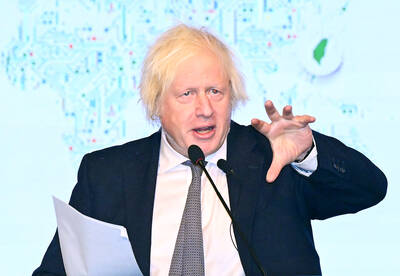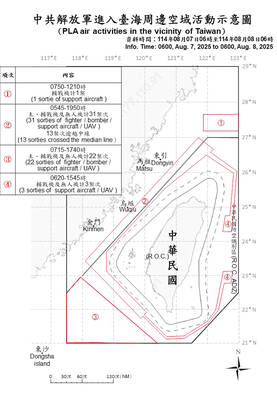Lions, giraffes, tigers, rabbits, bears, rhinoceroses and even owls can go blind from cataracts, but an east German firm has an answer: custom-made “contact lenses.”
The procedure is delicate, to say the least, and requires special training for veterinarians. But it has propelled tiny S&V Technologies, founded by Bavarian chemist and entrepreneur Christine Kreiner in the former communist east, to global leadership in a highly specialized field.
The acrylic intraocular lenses are implanted into animals’ eyes when their vision has clouded to the point of total impairment and are fitted for various species — from cat-eye-sized to fist-width for rhinos.

PHOTO: AFP
“Cataracts generally means blindness for animals, unlike for humans,” said the head of the company’s veterinary division, Ingeborg Fromberg.
“And because animals have short life spans, it means losing quality of life in a greater share of that life,” Fromberg said.
Since its launch last year, the company has fielded calls from Sea World in San Diego (a sea lion that had trouble performing tricks because of severely blurry vision), an Australian nature park (a blind kangaroo) and a Romanian zoo (a visually impaired lioness).
The German lenses have helped turn the lights back on for dozens of house pets, racehorses, circus animals, guide dogs — literally preventing the blind leading the blind — and even wild creatures roaming nature reserves.
Special lenses that absorb UV rays can also be used to help horses afflicted with “head shaker syndrome,” an excruciating and ultimately life-threatening ailment.
Although the expense of such an operation and subsequent check-ups can run into the thousands of dollars, the procedure is often worth it for animals that have gone blind — and for their owners.
“When something is unsettling for an animal, when they don’t have a good sense of their surroundings, they can begin to get aggressive or unpredictable or withdrawn,” Fromberg said.
That can mean the pricey investment in training an animal is wasted.
Impaired vision can also blunt the sex drive, stopping animals from reproducing. The World Wildlife Fund, for example, has paid for lens transplants for brown bears in a preserve in China.
“Of course that is only one side of it — some are pets and seen as members of the family and worth any expense,” Fromberg said.
She said the trickiest part of treating big animals such as elephants and rhinos is the anesthesia.
“If larger animals lie for too long on one side during an operation, then it puts too much pressure on the heart. That makes things a bit harder,” she said.
“With a giraffe, for example, its head may never be lower than its heart. Every animal has its peculiarities that you have to contend with,” she said.
Chief executive Kreiner, a 64-year-old from Munich, chose to set up her unusual firm in Hennigsdorf, a sleepy riverside town that has become a high-tech haven in the 20 years since the Berlin Wall fell.
On the capital’s northern outskirts, Henningsdorf also made smart business sense because the EU and the German government both pitched in to provide one-third of the startup costs.
Kreimer has founded five different firms in her years in business and said she was drawn to Germany’s ex-communist east in the heady trailblazing mood of national unification in 1990.
“I thought at the time that it would be better to go to a poorer part of Germany rather than stay in Bavaria,” the prosperous southern state, she said.
“The thinking was that it would be less bureaucratic in an eastern state, and that the subsidies would be better than in the west. It was the right decision,” she said.
Her various enterprises blossomed and evolved over the years, culminating in the founding of S&V Technologies in January last year. The company now even has a US subsidiary in Salt Lake City.
S&V posted turnover of nearly 2.5 million euros (US$3.5 million) last year. Kreiner expects it to grow by one-third this year based on lens sales, as well as a thriving anti-wrinkle products division — for humans.
She employs 32 people with another five to join this year.
“There are no global players active in this area that are able to crush medium-sized firms with a major marketing operation,” Kreiner said, adding that her few competitors — in Canada, France and the US — are all smaller than S&V.
The main limit to her business’s growth is a lack of vets able to perform the implantation procedure, which is why she now organizes training weekends for animal doctors from around the globe.
Participants have come from as far as Australia, Brazil, Japan, Taiwan and the United States to learn the procedure in the company laboratory on eyes harvested from animal cadavers.

Authorities have detained three former Taiwan Semiconductor Manufacturing Co (TMSC, 台積電) employees on suspicion of compromising classified technology used in making 2-nanometer chips, the Taiwan High Prosecutors’ Office said yesterday. Prosecutors are holding a former TSMC engineer surnamed Chen (陳) and two recently sacked TSMC engineers, including one person surnamed Wu (吳) in detention with restricted communication, following an investigation launched on July 25, a statement said. The announcement came a day after Nikkei Asia reported on the technology theft in an exclusive story, saying TSMC had fired two workers for contravening data rules on advanced chipmaking technology. Two-nanometer wafers are the most

DEFENSE: The first set of three NASAMS that were previously purchased is expected to be delivered by the end of this year and deployed near the capital, sources said Taiwan plans to procure 28 more sets of M-142 High Mobility Artillery Rocket Systems (HIMARS), as well as nine additional sets of National Advanced Surface-to-Air Missile Systems (NASAMS), military sources said yesterday. Taiwan had previously purchased 29 HIMARS launchers from the US and received the first 11 last year. Once the planned purchases are completed and delivered, Taiwan would have 57 sets of HIMARS. The army has also increased the number of MGM-140 Army Tactical Missile Systems (ATACMS) purchased from 64 to 84, the sources added. Each HIMARS launch pod can carry six Guided Multiple Launch Rocket Systems, capable of

CHINA’s BULLYING: The former British prime minister said that he believes ‘Taiwan can and will’ protect its freedom and democracy, as its people are lovers of liberty Former British prime minister Boris Johnson yesterday said Western nations should have the courage to stand with and deepen their economic partnerships with Taiwan in the face of China’s intensified pressure. He made the remarks at the ninth Ketagalan Forum: 2025 Indo-Pacific Security Dialogue hosted by the Ministry of Foreign Affairs and the Prospect Foundation in Taipei. Johnson, who is visiting Taiwan for the first time, said he had seen Taiwan’s coastline on a screen on his indoor bicycle, but wanted to learn more about the nation, including its artificial intelligence (AI) development, the key technology of the 21st century. Calling himself an

Sixty-three Chinese incursions into waters and airspace around Taiwan were detected in the 24 hours to 6am yesterday, with 38 craft crossing the median line of the Taiwan Strait and entering the nation’s northern, central, southwestern and eastern air defense identification zones, the Ministry of National Defense (MND) said. The activity represented a ramp-up of Beijing’s “gray zone” warfare directed at Taiwan over the past two days, the ministry said. A wave of 31 Chinese craft, consisting of fighters, fighter-bombers and uncrewed aerial vehicles, was tracked from 5:45am to 7:50am on Thursday, it said. In an apparent act of provocation, 13 of them